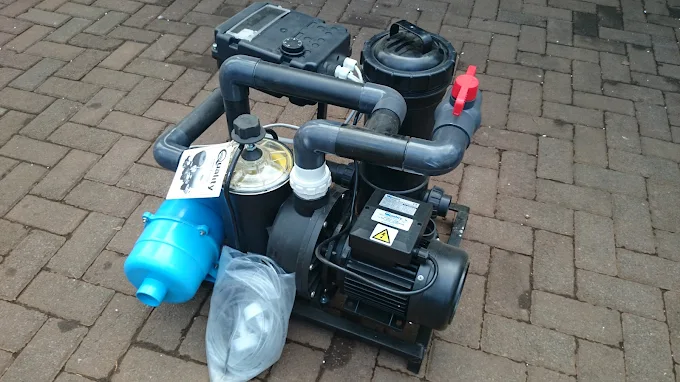
Businesses across many sectors face rising supply chain challenges today. The cost of basic materials has climbed at shocking rates. Many owners watch their margins shrink with each passing month.
Fuel price increases hit both production and delivery systems hard. Parts that once arrived quickly now cost more and take longer. Raw materials command premium prices due to worldwide shortages.
These cost jumps hit hardest when they come without warning. Many business plans didn’t account for such rapid increases. Budget forecasts now seem like wishful thinking from another time.
Financial Tools for Tough Times
Online instalment loans offer breathing room during cash flow crunches. They provide quick access to working capital when you need it. Many lenders approve applications within one business day.
Structured repayment plans help with budget planning and management. You know exactly what you’ll pay each month without surprises. This predictability proves valuable when other costs fluctuate widely.
These instalment loans online can bridge gaps while you implement longer-term solutions. The extra time lets you negotiate better terms with suppliers. You can also develop new strategies to improve operational efficiency.
Trim Low-Margin Products or Services
Your sales data can show which items truly make money for your business. Many firms look at sales numbers but miss the profit margin details. This gap lets poor products stay in your lineup too long. A good review might show profit coming from places you didn’t expect.
The products that cost more than they earn should be cut quickly. These weak items pull money and time away from better options. When you drop weak items, you free up resources for your winners.
The best focus areas are items with strong returns and stable demand. Good products need fewer raw materials but still sell at decent prices. These smart choices help your business stay strong when costs rise. Your profit stays safer when you pick the right product mix.
Tighten Daily Operations
Your tracking system should catch where supplies are used or wasted. Small losses add up fast and hurt your bottom line daily. Simple logs near supply areas can show who uses what and when. These basic steps often show waste that was hidden before.
Extra work hours should only happen when clients pay for the rush. The cost of added staff time eats profit faster than most owners think. Better work plans can stop many last-minute rush jobs. Your costs stay lower when teams work normal hours.
All your power, tools, and vehicles need to be used with care. Machines that sit idle still cost you money every minute. Simple timers can cut your power bills by amounts you’ll notice. Small fixes across your whole shop add up to real savings.
Your work steps should be clear enough to prevent costly do-overs. Each error costs twice, once in wasted stuff and again in labour. Short, clear guides work far better than long-written rules. Teams that get things right the first time save you money.
Train Staff to Spot Cost Leaks
Your team needs to see how supply costs affect the whole business. Most workers never notice how small waste hurts the company’s health. Clear numbers about costs make the point better than long talks. People take better care when they know why it matters.
The staff who find smart ways to save should get quick praise. A simple thank-you builds better habits at no extra cost. Small prizes for big ideas get everyone thinking about savings. This good feeling works better than getting upset about waste.
Small daily savings grow into big money over time for your business. One saved item means little by itself in your budget. That same small saving done daily adds up to major money. Your team should see how their small steps help the big picture.
A few simple rules work better than many complex ones. The team will forget or ignore too many detailed policies. Three or four key habits stick in mind when the twenty rules fade away. Your best path to savings comes through clear, simple standards.
Lock in Stable Long-Term Costs
Your key supplies can be locked in at fixed prices for months. Many suppliers will trade price holds for your loyal business. These deals keep you safe when market prices jump up suddenly. Your planning works better when you know what the costs will be.
The smart move is to buy extra when prices take a quick dip. Some storage space for items you use all the time makes sense. This plan turns brief low prices into long-term gains for you. Good timing helps fight back against other rising costs.
Getting 36 month loans from direct lenders can ease your cash flow pain. The longer term means smaller monthly bills that fit tight budgets. Most such loans come with rates that stay the same until paid off. Your monthly costs stay the same while market prices swing wildly.
The loan money used for bulk buying often saves more than the interest. Your buying power grows, and vendors offer better deals on volume. The quick savings start the day you make larger supply buys. This turns your loan into a tool that builds more profit.
When Your Supply Costs Spike: Mistakes to Avoid
Many business owners rush to raise prices at the first sign of cost increases. This knee-jerk move often sends customers running to your rivals. Your price hikes should come only after trying all other options first.
The wrong move is cutting quality to save money during tight times. Customers notice these changes quickly and lose trust in your brand. Your standards must stay high even when your costs climb higher.
Some managers delay action, hoping costs will drop back down soon. This wait-and-see approach burns through cash reserves very quickly. Your response needs to start the same day you notice cost trends rising.
Conclusion
Customers have grown extremely sensitive to any price increases. They quickly compare options online before making purchases. Your competitors might be absorbing costs to maintain market share.
The risk of losing longtime buyers looms over pricing decisions. Raising prices even slightly could drive them to alternatives. Many markets have reached their ceiling for what buyers accept.
Your profit margins likely sit at their thinnest point in years. Each new order brings less actual profit than before. The math becomes harder as costs rise, but prices stay flat.




